WWI "Camp de Souge" France - A.E.F. 62d F.A. Brigade - Artillerymen Firing Map - 1st Lieut.. E. V. McKey Jr. - 134th Field Artillery

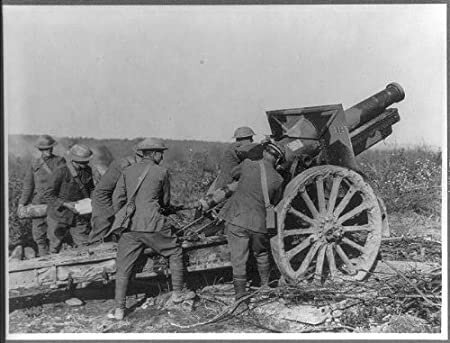


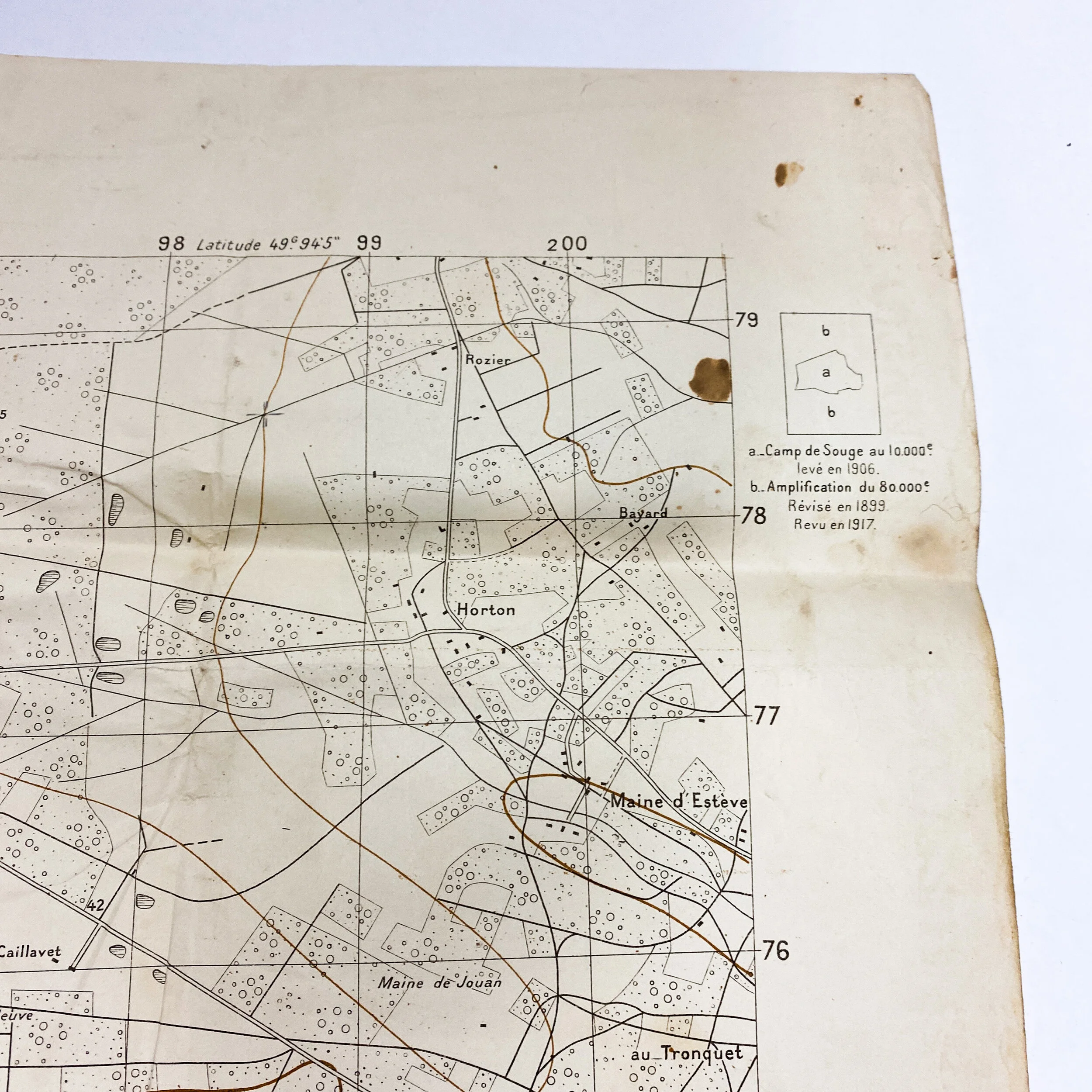














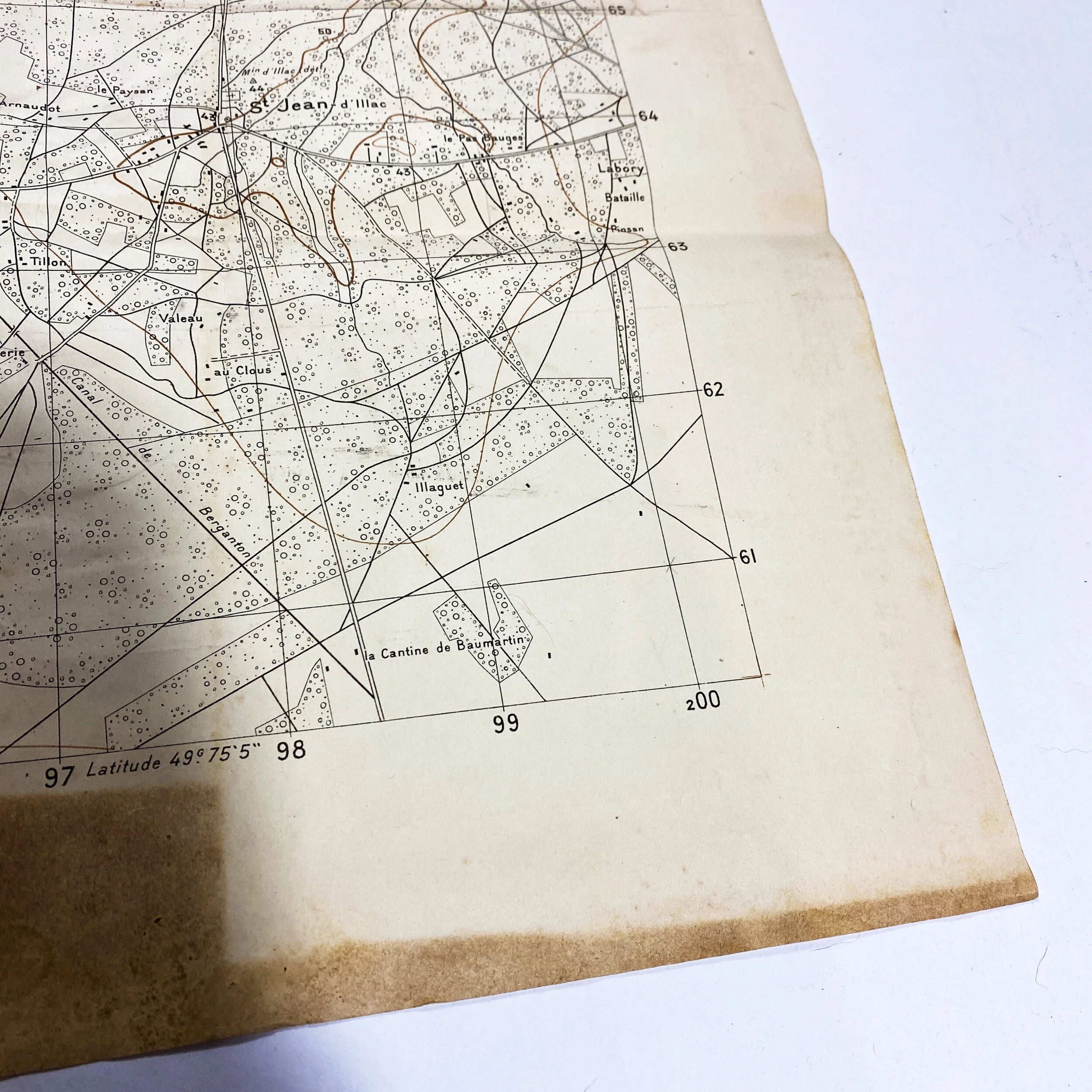
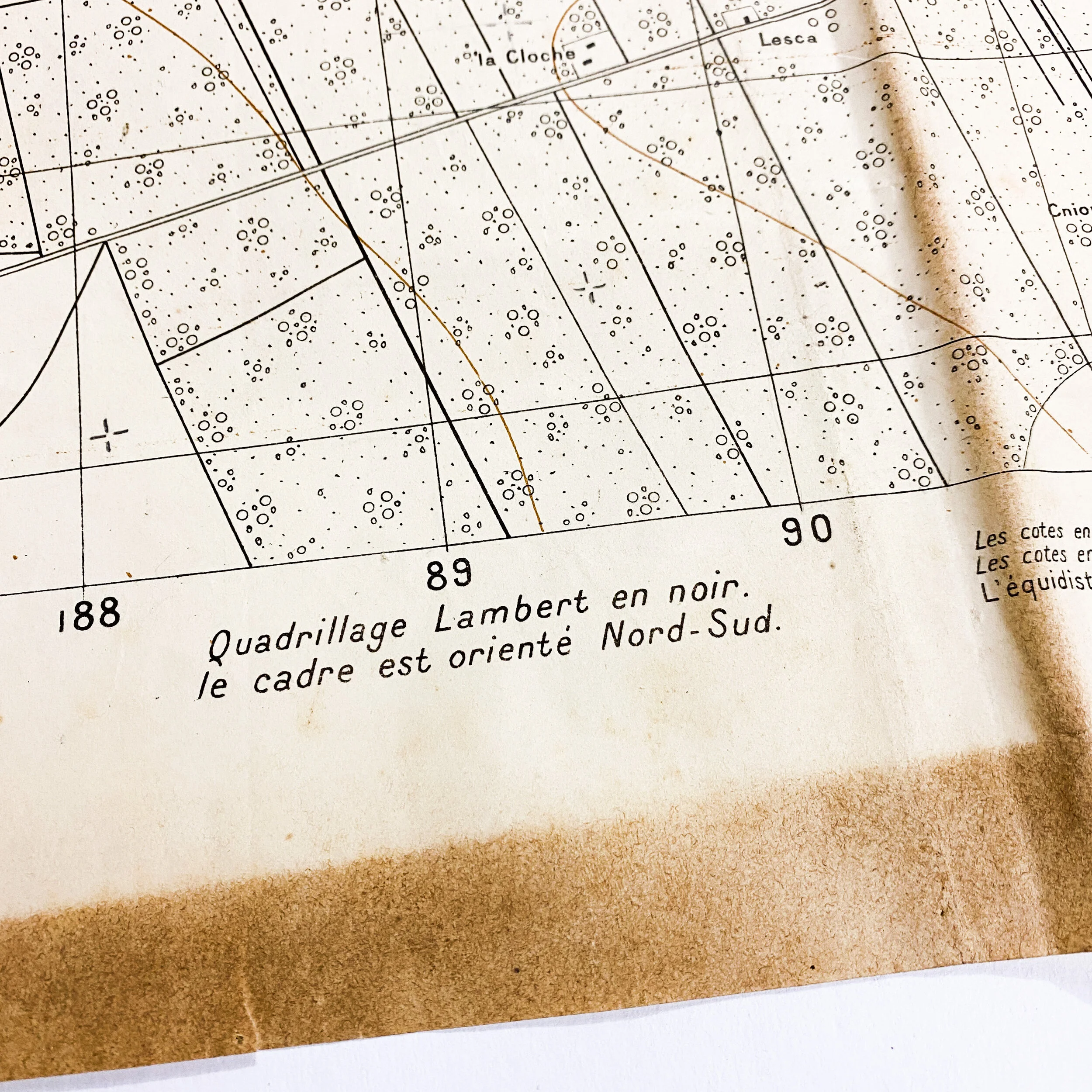
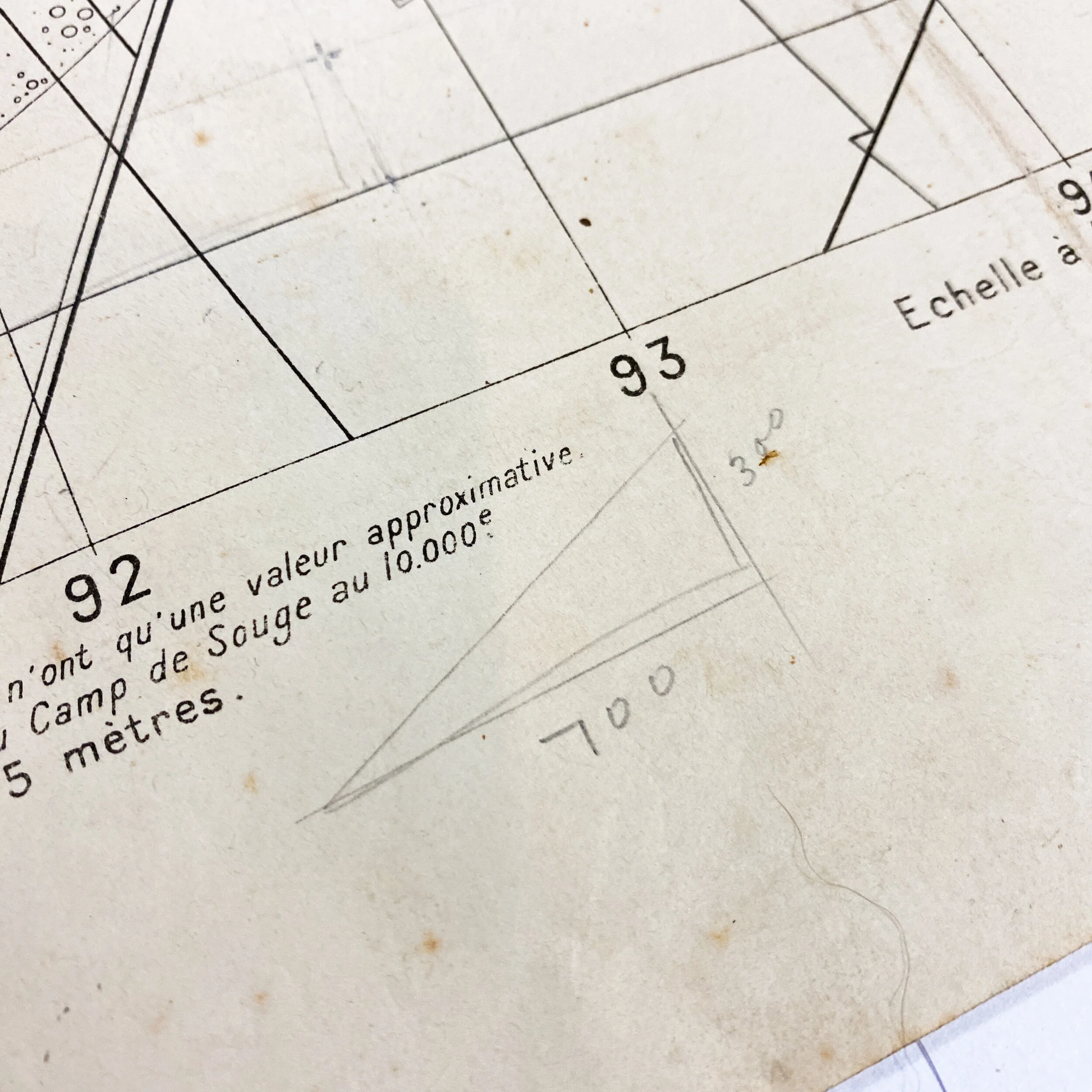
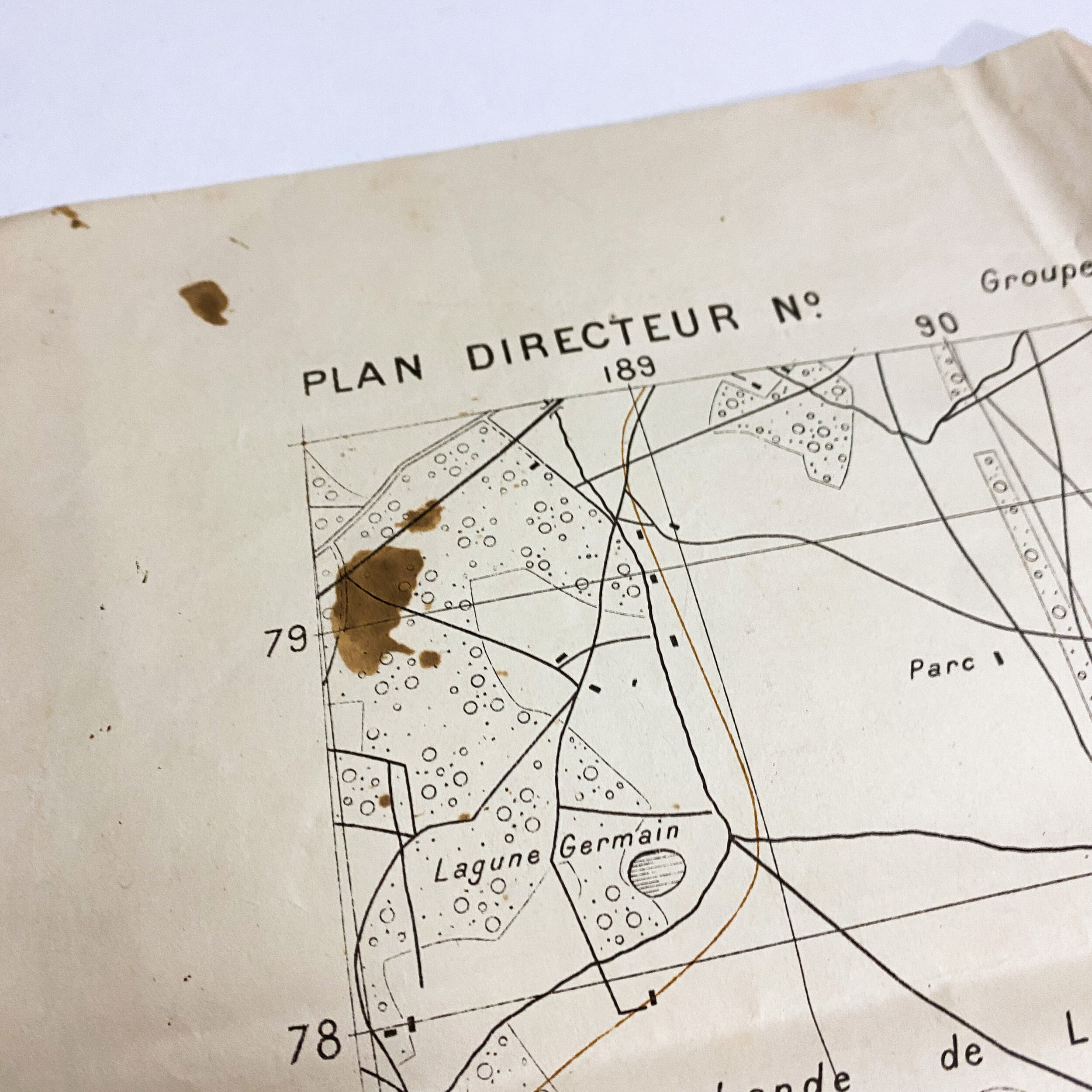


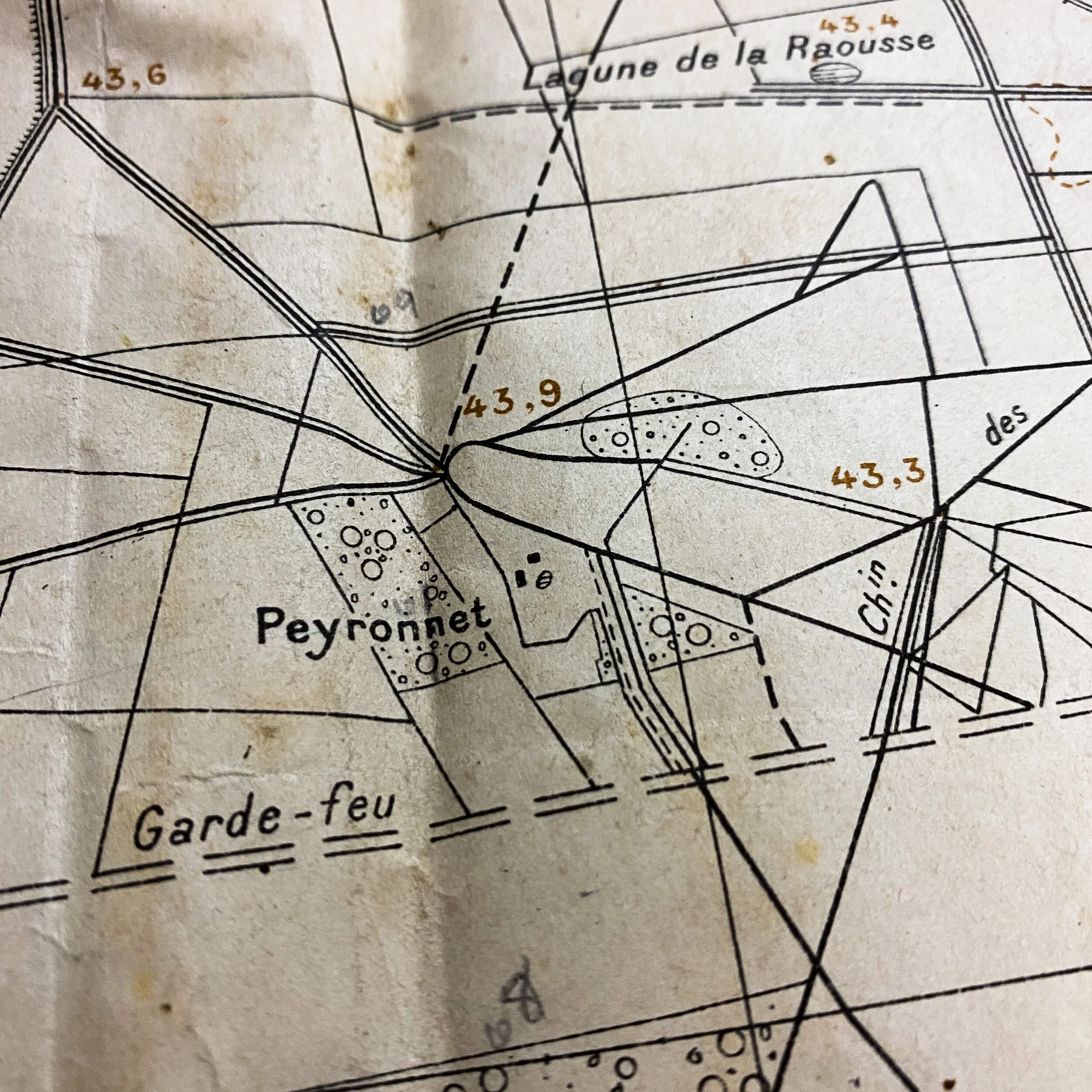


WWI "Camp de Souge" France - A.E.F. 62d F.A. Brigade - Artillerymen Firing Map - 1st Lieut.. E. V. McKey Jr. - 134th Field Artillery
Size: 42 x 29.5 inches
Titled “Camp de Souge”, this large World War 1 map was used by 1st Lieut.. E. V. McKey Jr. and the 134th Field Artillery while training in the use and tactics and artillery firing training at Camp de Souge in France. The first unit of the division arrived in France June 18, 1918. It is here where all artillerymen of the 62d Field Artillery Brigade: including the 134th and 135th (light), 136th (heavy) Field Artillery; 112th Trench Mortar Battery were sent to Camp de Souge, near Bordeaux to train in the use of the very cannons and learn of WWI tactics that would help them on the battlefields. Immediately following their training at Camp de Souge they were immediately sent to the frontline as they participated in the Meuse-Argonne Offensive, serving successively with the 4th American Corps, Second American Army, 2d Colonial Army Corps (French) and the 17th French.Army Corps. What makes this map so unique is the heavy wear that this map shows, it was heavily used in training by the 134th Field Artillery as it was a bring back map of 1st Lieut.. E. V. McKey Jr. The map still shows written annotation of the artillerymen as seen on the geographical map itself as well as on the sides of the map. This map features the practice range artillery coordinates, barrage firing corrections, as well as including height adjustments and degree annotations. Written in pencil on the sides, it shows the very math the A.E.F. were trained to use as the artillerymen practiced firing live rounds on a targets miles away. This map would have most likely been used at the firing ranges, where A.E.F. artillerymen would have used it to designate fire on a specific target (as marked on the map), and taught tactics of the front.
Collection: 1st Lieut.. E. V. McKey Jr. and the 134th Field Artillery.
This exclusive collection of World War I maps are from the bring back collection of 1st Lieut. E. V. McKey Jr. who was an A.E.F. artilleryman and saw extensive combat over the course of WWI serving valiantly with the 37th Infantry Division - 62nd Field Artillery Brigade -134th Field Artillery Regiment. The 62d Field Artillery Brigade - 134th Field Artillery is accredited battle participations in the Marbache sector where they provided extensive fire support and artillery barrages during the Meuse-Argonne offensive as well as the Thiaucourt sector during the St. Mihiel offensive. Many of these maps were used directly by the 1st Lieut. E. V. McKey Jr. and his men of the 134th Field Artillery as they provided offensive and defensive fire support for the Allies with their 75 mm cannons. The 62nd Field Artillery Brigade is one of the most infamous field artillery units of World War.
Below are first hand quotes of an A.E.F. artilleryman while training at Camp de Souge:
“Place was found for us in the dismal colony of dismal barracks and we settled down to the business of learning the art of war. It seemed that our artillery methods of old Upton were most excellent for fighting Mexicans but painfully inadequate against Germans. Officers and men were told to forget everything they knew and begin all over again. From Colonel Miller down to the lowliest greaseball, began weeks of school in which we were initiated into the mysteries of dvo's corrections of the moment, canevaux trenches, splices, tuning coils, panels, and the nomenclature of the piece, ~ la Francais and according to each man's special function as laid out in the tentative organization tables of the time.”
There was one other ordeal-the gas chamber and the gas masks. The We Fear the Worst Department at G. H. Q., desiring that all men should know what gas was like, had a huge concrete tank constructed with an attractive little gas-tight doorway. Then they filled the place with a mild but sufficiently nasty concentration of tear gas, bade us don our "respirator box," and invited us into the parlor. We suffered more from ten minutes of gas in that blue-gray hole of a tank than during our whole tour of the Front.
At length came word that we were to proceed to the artillery range for practice. As a child with a toy pistol longs for the Glorious Fourth we longed for the chance to pull the lanyards of our big howitzers and see a hundred pounds of super-steel travel from here to miles-away in a few seconds.
It was here on the range at Souge that the regiment received the training that made it a factor in the fighting A. E. F. The range was the scene of the finals in the great contest for promotion within the regiment. Here officers, gun crews, the telephone, radio, scout, and instrument details for the first time put their theoretical knowledge to the test of actual practice. We were told at Souge, that no regiment of artillery had done so well at the range before. And certainly if we did not set the world afire we made a brave and all but successful attempt the day the range was aflame. Hundreds of us fought and conquered that fierce brush fire with no better tools than picks, shovels, and rakes. The smoke filled the sky for miles, alarming the whole countryside-even as the roar of our guns had caused a temporary panic in Bordeaux, for these were days when the Boche was a very real terror and the end of the war ten years away, if you were logical and understood European affairs.
At length came orders to pack up and leave Souge, its sand, its flies, and its Bordeaux passes forever. We had come to Souge a regiment of rookies, masters of obsolete artillery methods, minus the very guns needful. We left Souge, a trained and powerful fighting force, well-organized, well-taught, well-equipped, ready to take our place in the line, the first regiment of heavies in the First National Army Division in the First American Army in France.”